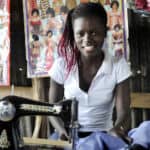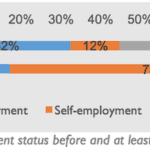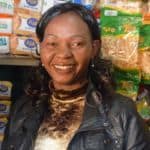More Than a Job: Helping Livelihood Programs Reach Their Development Potential
The term “livelihood” is perfect for development professionals: they can easily tout it as a core tenet of their work because its definition is amorphous – “a means of securing the necessities of life.” Donors, government agencies and NGOs alike all claim to work on livelihoods, and each entity molds the term to their own specifications. From the core mission of India’s National Rural Livelihoods Mission, to the UN Food and Agriculture Organization’s folding of livelihood into their rural and resilience work, to the billions that the Gates Foundation has invested in the Lives and Livelihoods Fund, livelihood projects can span most sectors and imply a whole host of objectives. They can include everything from skills training for future employment, to multi-stakeholder coordination to address issues of financial security, household decision-making, purchasing power and long-term job satisfaction.
But while it’s fine to have many versions of what livelihood means to each of us, it’s important to remember that livelihood isn’t the same as employment, and we shouldn’t relegate the two terms to the same over-simplified corner. Livelihood is a complex concept, of which employment is just one element. And though we could unpack the frustrations of development practitioners trying to collaborate around a multi-definitional term like “livelihood,” it is far more interesting and productive to delve into the process of how to create and implement a powerful livelihood strengthening program, and why it’s so important.
How Livelihoods are Strengthened
To truly engage with and strengthen the more complex notion of livelihood, there are many components that must be considered and appropriately balanced. Groups like S3IDF, Technoserve and Accion have spent decades weighing and employing these different components in their delivery of livelihood strengthening services. As a result, they have transformed the lives of those with whom they’re directly working, and simultaneously fostered more sustainable, inclusive development in the broader communities.
To truly understand how deep livelihood strengthening can be done, let’s walk through an example of how S3IDF (the organization for which I work) collaborates with small and marginal farmers in rural Karnataka, India. Our particular brand of livelihood strengthening (although by no means the only effective method) involves using a market-based approach to systematically lower the barriers that prevent individuals from accessing necessary finance, equipment and skills-based training. This method is based on decades of research and the experiences of our founders, who identified these three components (financing, equipment and training) as critically inaccessible for poor and underserved individuals looking to strengthen their livelihoods and better provide for their families and communities.
Engaging small and marginal farmers through cooperatives and farmer producer organizations (FPOs), S3IDF’s market-based approach works to ensure that FPO leaders and members will have the skills, assets and connections to maintain their livelihoods beyond our period of engagement, and to weather potential individual and organizational shocks. This holistic approach includes assessing and recommending optimal environmental practices and regionally-appropriate crops for planting, fostering connections to local financial institutions and markets, and providing capacity building support and assistance in acquiring productive assets (e.g. agricultural processing machines).
An Ecosystem Approach
We and our partners assist the FPOs and their farmer members to become banked and receive a formal loan, to evaluate and purchase equipment like millet grinding machines or mobile areca de-huskers, and to learn the skills that will allow them to build viable business plans and strategically prepare for growth. This process involves many stakeholders and can take a long time. If it were easy and straightforward, the farmers and FPOs would likely not need assistance, and existing public and private stakeholders would be able to serve their needs without our facilitation.
But though it’s challenging, this type of livelihood strengthening builds the foundation of sustainable change. As part of the process, S3IDF takes a necessary multi-pronged approach. We employ philanthropically-funded partial loan guarantees, and offer banks assistance in conducting know-your-customer evaluations. We speak with local fabricators and equipment suppliers to assess their quality, scale and service offerings. We seek out viable and applicable government assistance programs, and collaborate with on-the-ground mobilizers who help the FPOs expand their membership base. We mentor, hand-hold and listen. This market-based approach centers on engaging the farmers and FPO leaders where they are, and helping them better understand their own needs and capacities.
Throughout this process, it is necessary to incrementally address the barriers to access and gaps in the services and products available to the farmers and FPOs. This helps to create an improved ecosystem in which secure, independent livelihoods become attainable for India’s marginalized small farmers. This is not just employment or job creation, or simple income increases, this is the full package. The improved ecosystem this facilitation generates for an FPO allows its member farmers to not only become financially secure, but to have the tools and knowledge to invest in other aspects of their lives: their children’s education, their homes, nutritious food, clean water and their own futures.
Towards Inclusive Systems
Within the broader global discourse, this improved ecosystem and livelihood strengthening are most intrinsic to Sustainable Development Goal 8, an objective whose indicators show slow but incremental progress. Unemployment is down globally, and the proportion of adults who have at least opened a bank account is up (a very limited financial inclusion proxy). However, real GDP per capita is slowing in growth (1.3 percent globally in 2016, down from the 1.7 percent rate recorded in 2010–2016). What’s more, 61 percent of all global workers are still informally employed, and gender inequality in earnings persists (UN SDG 8 Progress). In order to achieve sustainable economic growth and at least decent work for all, we need more people and organizations that understand the value of strengthening livelihood and are enabling others to enjoy it.
The groups noted earlier (S3IDF, Technoserve and Accion) are already implementing comprehensive livelihood programs. These programs go beyond employment and address the root challenges impeding individuals from reaching their full economic potential, incrementally shifting our systems and markets to become more inclusive. By facilitating dialogue and engagement between the poor and marginalized and those in positions of power in the markets, practitioners are building collaborative and informed relationships across previously separate, and often divided, groups. But more allies and participants are needed to both strengthen livelihoods on a case-by-case basis, and to truly create inclusive systems.
Livelihood can, and perhaps always will, mean something different to everyone who says, reads or writes it. But by better understanding how it can be strengthened, each of us has the capacity to help others build the foundation for a better life.
Lexi Doolittle is a Program Specialist at S3IDF.
Image courtesy of ICARDA.
- Categories
- Uncategorized



